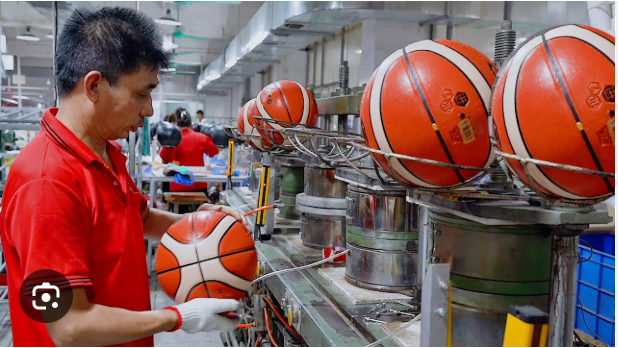Introduction to the Sports Equipment Market
The sports industry has always been a dynamic sector, driven by both recreational players and professional athletes. Within this wide market, one area showing rapid growth is the demand for bulk sports balls. Manufacturers and suppliers are constantly finding innovative ways to meet the rising needs of schools, sports academies, fitness clubs, and wholesale distributors. As sports culture expands globally, bulk purchases are becoming an economical and practical solution for organizations and retailers.
Why Bulk Sports Balls Are in High Demand
Sports is no longer confined to professional leagues. Educational institutions, corporate wellness programs, and community events regularly require equipment in large quantities. Instead of buying individual items, many organizations opt for bulk sports balls to cut costs and ensure uniformity across teams. Additionally, bulk purchasing reduces logistical challenges, as suppliers can deliver consistent batches of footballs, basketballs, volleyballs, or cricket balls at once.
Manufacturing Considerations for Large Orders
When it comes to fulfilling bulk sports balls orders, manufacturers face unique challenges. They must maintain strict quality standards across thousands of units while keeping production costs reasonable. Key considerations include:
- Material selection: Synthetic leather, rubber, or polyurethane is chosen based on the type of sport.
- Durability: High-volume production must ensure the balls last through extended use.
- Customization: Clients often request branding, logos, or color themes.
- Packaging: Proper storage and shipment solutions are essential to maintain quality.
Benefits of Purchasing in Bulk
For buyers, bulk sports balls bring several advantages beyond cost savings. Schools, for example, can provide every student with access to proper equipment, which improves participation in physical education. Clubs and training academies also benefit from uniformity, ensuring every athlete trains with the same standard of equipment. Retailers, on the other hand, gain higher margins by sourcing directly from manufacturers in bulk quantities.
The Role of Technology in Production
Modern manufacturing of bulk sports balls involves advanced machinery and automated processes. From molding rubber cores to precision stitching of outer covers, technology ensures consistency in design and performance. Many manufacturers also integrate computer-aided quality testing, checking for air retention, bounce bulk sports balls accuracy, and durability. These improvements allow large orders to be processed efficiently without compromising quality.
Environmental Factors in Manufacturing
Sustainability has become a priority in recent years. Producers of bulk sports balls are now adopting eco-friendly practices such as using recycled materials, biodegradable packaging, and energy-efficient production methods. This shift not only appeals to environmentally conscious buyers but also helps manufacturers meet international regulations.
Supply Chain and Distribution Efficiency
Delivering large quantities of sports equipment requires robust supply chain systems. Manufacturers often work with logistics partners who specialize in bulk shipments. Proper inventory management ensures that large orders can be fulfilled quickly, especially for seasonal sports events or school term beginnings. Some companies also maintain regional warehouses to reduce delivery times and costs.
Challenges in the Bulk Market
While the demand is strong, the bulk sports balls industry faces challenges such as raw material price fluctuations, counterfeit products in the market, and the need for continuous innovation. Additionally, global supply chain disruptions, as seen during recent years, highlight the importance of strong logistics planning and localized production strategies.
Future Outlook for Bulk Sports Balls
The future of the market looks promising as sports participation continues to rise globally. Developing countries are investing more in school sports programs, while international events like the Olympics and FIFA World Cup further boost demand. Manufacturers who can provide high-quality, affordable, and customizable bulk sports balls will remain competitive in the long run.
Conclusion
The manufacturing sector for bulk sports balls is expanding as sports become more accessible across all levels of society. From schools to professional academies and retailers, bulk purchasing offers significant benefits in cost, consistency, and availability. Manufacturers are adapting through innovation, sustainability, and efficient supply chains. As a result, bulk sports balls are not only meeting the needs of today’s market but also shaping the future of global sports participation.

